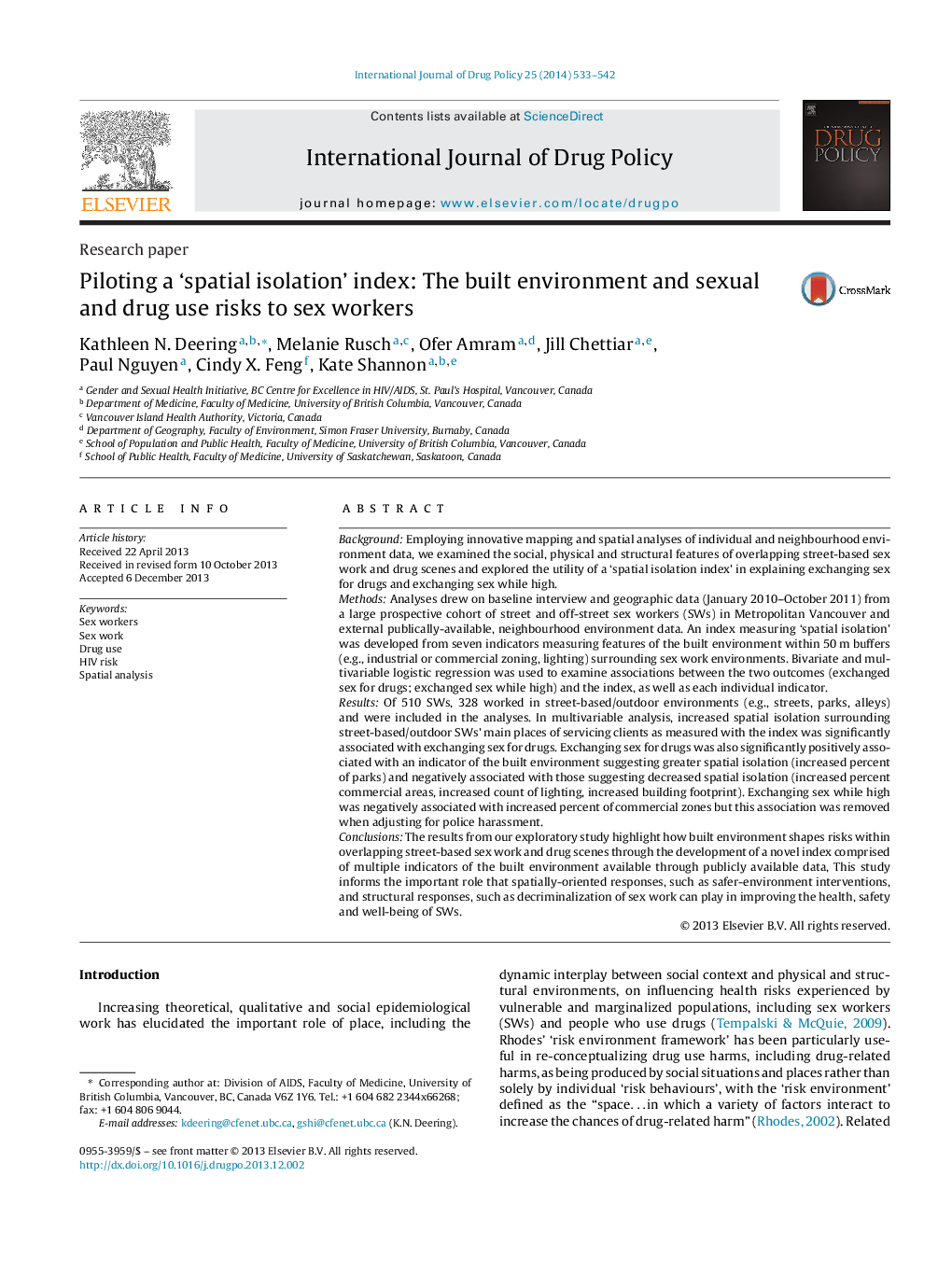| کد مقاله | کد نشریه | سال انتشار | مقاله انگلیسی | نسخه تمام متن |
|---|---|---|---|---|
| 1075126 | 1486295 | 2014 | 10 صفحه PDF | دانلود رایگان |
BackgroundEmploying innovative mapping and spatial analyses of individual and neighbourhood environment data, we examined the social, physical and structural features of overlapping street-based sex work and drug scenes and explored the utility of a ‘spatial isolation index’ in explaining exchanging sex for drugs and exchanging sex while high.MethodsAnalyses drew on baseline interview and geographic data (January 2010–October 2011) from a large prospective cohort of street and off-street sex workers (SWs) in Metropolitan Vancouver and external publically-available, neighbourhood environment data. An index measuring ‘spatial isolation’ was developed from seven indicators measuring features of the built environment within 50 m buffers (e.g., industrial or commercial zoning, lighting) surrounding sex work environments. Bivariate and multivariable logistic regression was used to examine associations between the two outcomes (exchanged sex for drugs; exchanged sex while high) and the index, as well as each individual indicator.ResultsOf 510 SWs, 328 worked in street-based/outdoor environments (e.g., streets, parks, alleys) and were included in the analyses. In multivariable analysis, increased spatial isolation surrounding street-based/outdoor SWs’ main places of servicing clients as measured with the index was significantly associated with exchanging sex for drugs. Exchanging sex for drugs was also significantly positively associated with an indicator of the built environment suggesting greater spatial isolation (increased percent of parks) and negatively associated with those suggesting decreased spatial isolation (increased percent commercial areas, increased count of lighting, increased building footprint). Exchanging sex while high was negatively associated with increased percent of commercial zones but this association was removed when adjusting for police harassment.ConclusionsThe results from our exploratory study highlight how built environment shapes risks within overlapping street-based sex work and drug scenes through the development of a novel index comprised of multiple indicators of the built environment available through publicly available data, This study informs the important role that spatially-oriented responses, such as safer-environment interventions, and structural responses, such as decriminalization of sex work can play in improving the health, safety and well-being of SWs.
Journal: International Journal of Drug Policy - Volume 25, Issue 3, May 2014, Pages 533–542
